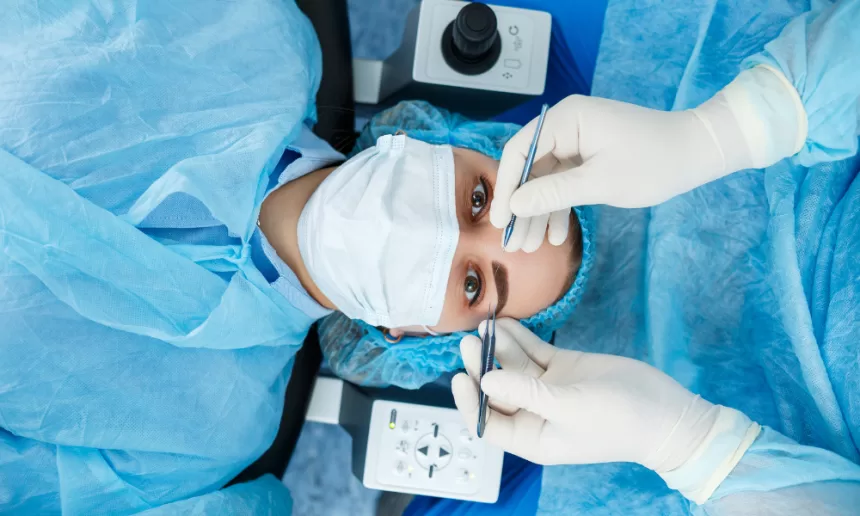Glaucoma Surgery
Introduction
Glaucoma is a set of ocular disorders that damages the optic nerve, often as a result of higher intraocular pressure (IOP). Glaucoma can cause vision loss and blindness if left untreated. Surgeons perform glaucoma surgery to reduce intraocular pressure, thus stopping the worsening of the optic nerve. It is an indispensable procedure for preserving vision when medications or laser therapy are ineffective.
What is Glaucoma Surgery?
Glaucoma surgery comprises manipulation techniques aimed at lowering intraocular pressure (IOP) through optimization of fluid outflow or diminution of outflow. These operations are used to control glaucoma and retard progression, preserving the optic nerve and maintaining vision.
Why is Glaucoma Surgery Needed?
Trabeculectomy is typically recommended for patients who:
- Have Uncontrolled Eye Pressure: Medicines and laser treatments fail to control IOP.
- Risk Vision Loss: Prevent further optic nerve damage caused by high IOP.
- Have Severe Glaucoma: Advanced cases that require surgical intervention.
- Cannot Tolerate Medications: Due to side effects or allergies.
Types of Glaucoma Surgery
- Trabeculectomy:
- Develops a drainage flap to drain fluid from the eye, reducing IOP.
- Tube Shunt Surgery:
- The procedure of instillation of a small tube to discharge the fluid and regulate the pressure.
- Minimally Invasive Glaucoma Surgery (MIGS):
- A novel approach of small devices for improved fluid drainage with short recovery time.
- Laser Trabeculoplasty:
- Opens the eye’s drainage system using laser energy to improve drainage of the eye of fluid.
- Cyclophotocoagulation:
- Acts on the ciliary body for fluid decrease and IOP decrease.
- Iridotomy:
- Introduces a tiny opening into the iris to facilitate corneal aqueous flow in narrow-angle glaucoma.
Procedure Steps
- Pre-Surgery Evaluation:
- Full-service examinations encompassing IOP measurement and examination of the optic nerve.
- Anesthesia:
- Local anesthesia and sedation are usually administered for patient comfort.
- Surgical Intervention:
The surgeon makes a new drainage path or reduces postoperative fluid production, depending on the procedure.
- Incision Closure:
Incisions are closed by sutures or left open, depending on the method.
- Post-Surgery Care:
Antibiotic and anti-inflammatory ophthalmic preparation is recommended for healing.
Benefits of Glaucoma Surgery
- Pressure Control: Effectively reduces IOP to prevent further damage.
- Preservation of Vision: Slows or halts vision loss progression.
- Long-Term Solution: Reduces dependency on medications in many cases.
- Minimally Invasive Options: MIGS offers shorter recovery times and fewer complications.
- Improved Quality of Life: Helps patients maintain independence and daily activities.
Cost of Glaucoma Surgery
- United States: $5,000 – $8,000
- United Kingdom: $4,000 – $7,000
- Thailand: $2,000 – $4,500
- India: $1,200 – $3,500
Best Hospitals in India for Treatment
India has all the resources required for glaucoma management and surgery, such as:
- Metro Hospital Faridabad: Advanced glaucoma surgery with an excellent success rate.
- Max Healthcare (Delhi) is recognized for its highly trained ophthalmologists and modern technology.
- Fortis Healthcare (Delhi): Well known for whole-glaucoma management and surgical skills.
Risks and Complications
While Trabeculectomy is generally safe, potential risks include:
- Infection: Preventable with proper postoperative care.
- Bleeding: Rare but may occur during or after the procedure.
- Vision Fluctuations: Temporary blurriness or fluctuations in vision.
- Scar Tissue Formation: This may block the drainage pathway, requiring further treatment.
- Low Eye Pressure (Hypotony): It may cause pain and complications if the pressure drops too much.
Recovery
The outcome of glaucoma surgery is different for different operation types.
- First Few Days: Avoid strenuous activities and protect the eye from trauma.
- 1-2 weeks: Swelling and redness subside; follow-up visits are crucial.
- 1 Month: Vision stabilizes and the full potential of the surgery becomes clear.



